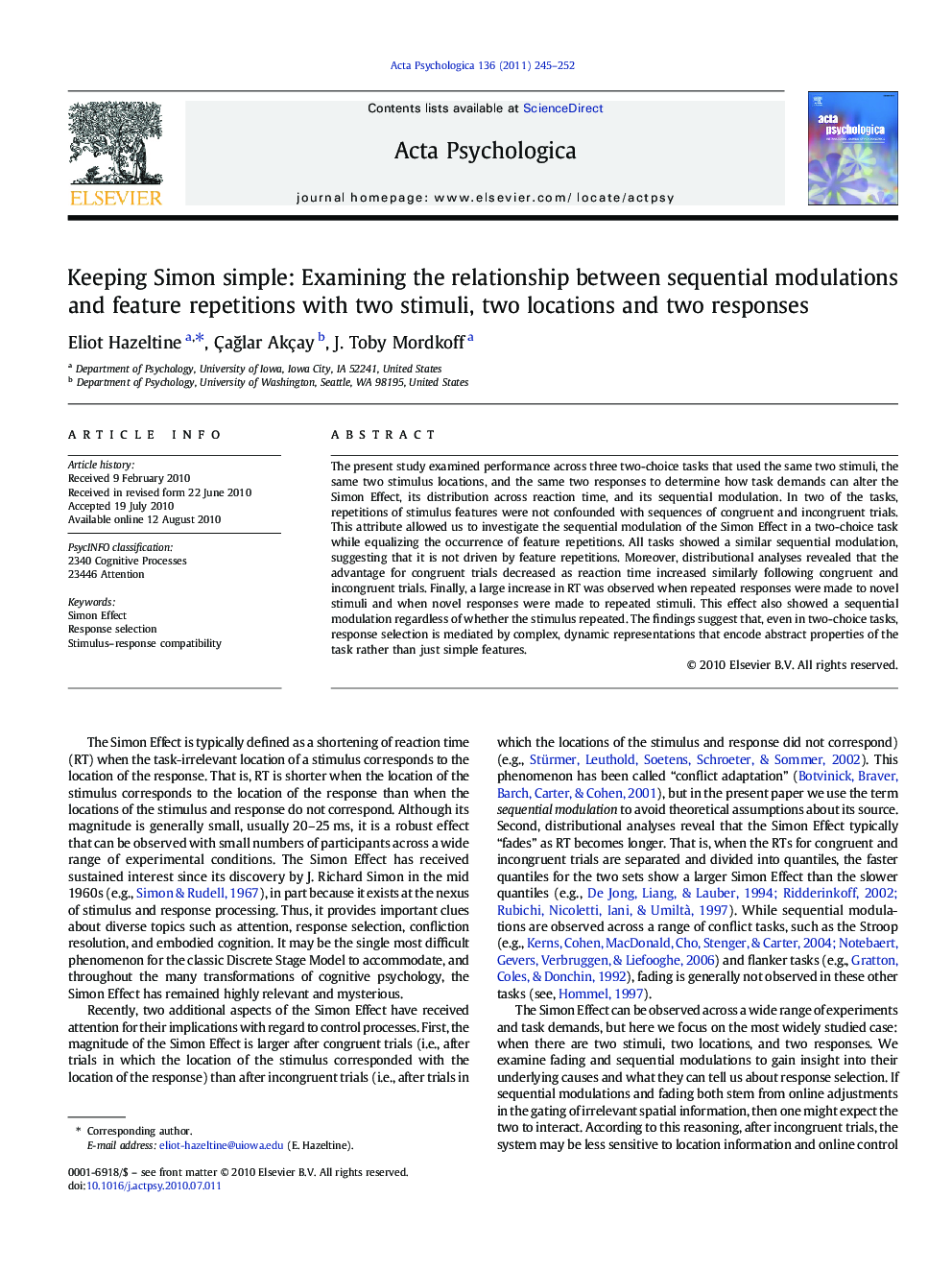| Article ID | Journal | Published Year | Pages | File Type |
|---|---|---|---|---|
| 920234 | Acta Psychologica | 2011 | 8 Pages |
The present study examined performance across three two-choice tasks that used the same two stimuli, the same two stimulus locations, and the same two responses to determine how task demands can alter the Simon Effect, its distribution across reaction time, and its sequential modulation. In two of the tasks, repetitions of stimulus features were not confounded with sequences of congruent and incongruent trials. This attribute allowed us to investigate the sequential modulation of the Simon Effect in a two-choice task while equalizing the occurrence of feature repetitions. All tasks showed a similar sequential modulation, suggesting that it is not driven by feature repetitions. Moreover, distributional analyses revealed that the advantage for congruent trials decreased as reaction time increased similarly following congruent and incongruent trials. Finally, a large increase in RT was observed when repeated responses were made to novel stimuli and when novel responses were made to repeated stimuli. This effect also showed a sequential modulation regardless of whether the stimulus repeated. The findings suggest that, even in two-choice tasks, response selection is mediated by complex, dynamic representations that encode abstract properties of the task rather than just simple features.
